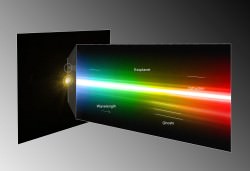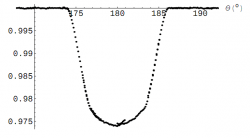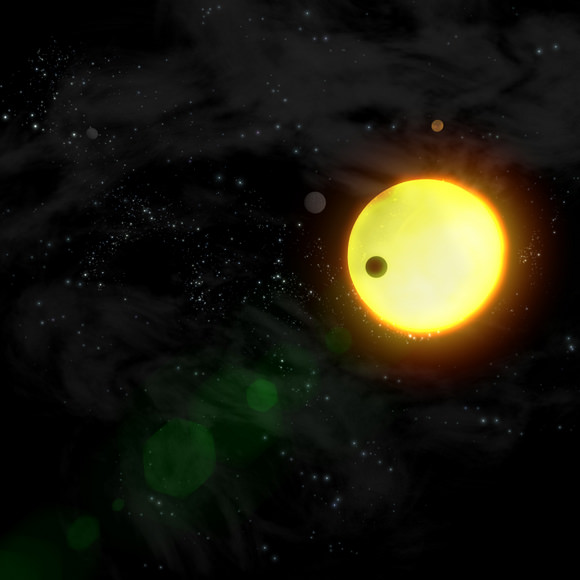[/caption]
Exoplanet discoveries are happening at a frenetic pace, and some of the latest newly discovered worlds are sometimes described as “Earth-Like” and “potentially habitable.”
The basis of this comparison is, in many cases, based on the distance between the exoplanet and its host star. Unfortunately the distance between a planet and its host star is only half the picture. The other half is determining if an exoplanet has an atmosphere, and what the contents of said atmosphere may be.
Basically, just because an exoplanet is in the “habitable zone” around its host star, it may not necessarily be habitable. If an exoplanet has a thick, crushing, Venus-Like atmosphere, it would most likely be too hot for surface water. The opposite holds true as well, as it could be entirely possible for an exoplanet to have a thin, wispy Mars-like atmosphere where any water would be locked up as ice.
At this point, how well can astronomers study the atmosphere around an exoplanet?

Methods to detect the atmospheric composition of such distant worlds are fairly new, as shown by work done with the Spitzer Space Telescope and ESO’s Very Large Telescope
Recently, astronomers from The Sternberg Astronomical Institute at Moscow State University used data from the Hubble Space Telescope in an attempt to better detect atmospheres around exoplanets. Abubekerov and team created mathematical models to analyze light curves from distant stars. In the case of Abubekerov’s research, the selected star was HD 189733 – a K-class star a bit cooler and smaller than our Sun.
About 60 light-years from Earth, HD 189733 also happens to have a binary companion orbiting it at a radius of about 200 A.U. So far, one exoplanet is known to orbit HD 189733. Discovered in 2005, HD 189733 b is a roughly Jupiter-size exoplanet which orbits its host star in just over two days. While not mentioned directly in Abubekerov’s paper, other studies have detected methane, carbon monoxide, water vapor and sodium in HD 189733 b’s atmosphere.

According to Abubekerov and team, the end result of their research was unsuccessful. The team suspects dark spot activity on HD 189733 was a contributing factor to their models not agreeing with actual observations.
The team stressed that additional observational data from HD 189733 when spot activity is negligible would be required to further refine their work. Despite their models not being successful, the team is confident that exoplanet radius increases with decreasing wavelength, which may imply the presence of an atmosphere.
Research such as Abubekerov’s will help astronomers build better models and pave the way for “sniffing” exoplanet atmospheres. Newer technology such as the James Webb Space Telescope and the European Extremely Large Telescope will also provide better data. In the not-too-distant future, astronomers and astrobiologists should be able to examine the atmospheres of exoplanets in the habitable zone.
If you’d like to read the full research paper, you can access a pre-print version at: http://arxiv.org/pdf/1201.4043v1.pdf
Source(s): Analysis of Light Curves of Eclipsing Systems with Exoplanets:
HD 189733. M. K. Abubekerov, N. Yu. Gostev, and A. M. Cherepashchuk , Extrasolar Planets Encyclopaedia


How well can astronomers study exoplanet atmospheres? Well, ideally they should be able to detect farts.
Or something similar, which would unambiguously distinguish between unicellular life forms and multicellular organism’s metabolism. Unfortunately I don’t know of anything tangible yet.
Perhaps a high enough oxygen concentration would only result from land plants?
Nice “anal”ogy, Torbjörn, haha, and probably suggests lots of methane in the atmosphere…
I have questions:
Titan is one of my favorite celestial bodies in our solar system, and so I wonder if you could entertain the possibility that life of some form has evolved there, despite the ‘freezing cold’;-)?
Could anything intelligent evolve in a silicon based environment, for instance? Greetings from Germany ;-), Michael
Hi, Fraser! Nice Hangout today with Pamela Gay… thanks for that. Is it possible, when posting images here to simply put the link for download (from whoever…) underneath the image. After all you guys have to get it from the originator, right, so you have the link! THANKS. Michael